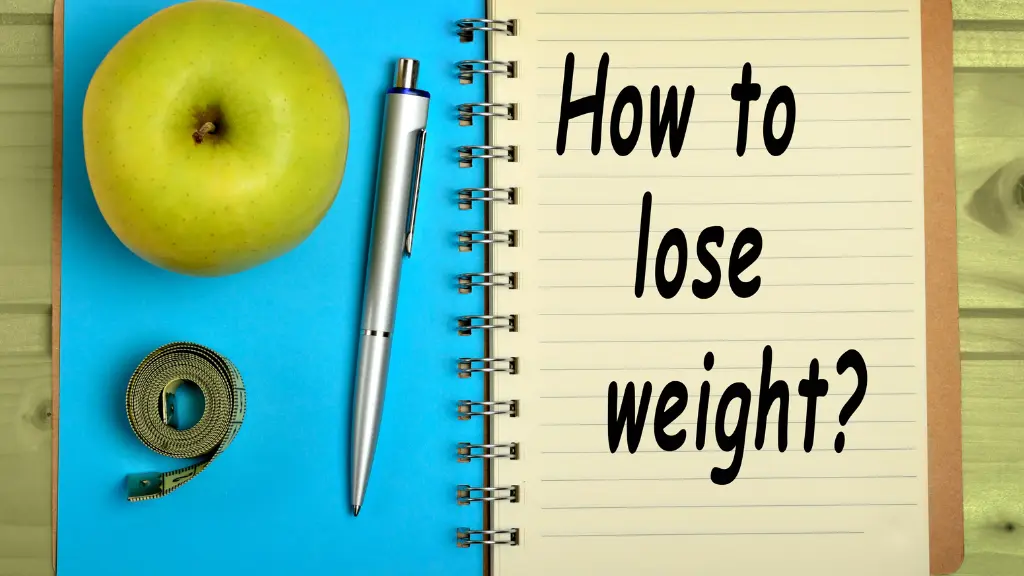Losing weight can be a challenging journey, both mentally and physically. The general recommendation for safe, sustainable weight loss is about 1-2 pounds per week.
However, some situations call for more rapid weight loss of 3 pounds per week, like wanting to drop pounds for an upcoming event or needing to lower blood pressure or cholesterol quickly due to health issues.
Whatever your motivation, losing three pounds weekly is possible with commitment, planning, and some key strategies.
When done right, trimming down at this brisk pace can also set you up for long-term weight maintenance.
This article covers everything you need to lose 3 pounds every 7 days in a safe and sustainable way.

Calculate Your Calorie Deficit For 3 Pound Weekly Weight Loss
At its core, weight loss boils down to a calorie deficit – you need to burn more calories than you consume. To lose:
- 1 pound of fat per week = Have a 500 calorie per day deficit
- 2 pounds per week = 1,000 calorie daily deficit
- So to trim down at the rapid clip of 3 pounds weekly, you need a daily calorie deficit of about 1,500 calories below your maintenance level.
Figuring out this calorie math is therefore the first step. Here is how:
Step #1: Calculate Your Maintenance Calories or Total Daily Energy Expenditure (TDEE)
Your TDEE represents the total number of calories your body burns daily including:
- Basal Metabolic Rate (BMR): The calories you’d burn if bedridden all day
- Activity/Exercise: Additional calories burned from any movement like walking, workouts, fidgeting
- Thermic Effect of Food (TEF): The energy cost of digesting and processing meals
So if weight loss is your main goal, start by using an online TDEE calculator to estimate your maintenance calories.
To get the most accurate number, input your details including:
- Age
- Sex
- Current weight
- Height
- Activity level
The resulting TDEE number reflects how many calories you’d need daily to maintain your current weight.
Step #2: Create Your Calorie Deficit For 3 Pound Weekly Loss
Once you have your maintenance calories or TDEE estimate, simply subtract 1,500 calories from that number to determine your daily target intake for 3 pounds per week weight loss.
For example:
- Your TDEE is estimated at 2,500 calories
- 2,500 maintenance calories
- – 1,500 calorie daily deficit
- = 1,000 calories per day target
So in this example, eating about 1,000 calories daily would result in an approximate 3 pound weekly weight loss. Of course, metabolic rates vary person to person.
You may need to adjust your intake up or down by 100-200 calories if needed to stay on track.
Important: Women generally should not eat below 1,200 daily calories and men no lower than 1,500 calories without medical supervision. Eating too little can backfire by lowering metabolism long-term.
Boost Your Calorie Burn Through Exercise
Trimming calories from your diet is the most direct path to weight loss. However, adding exercise serves a dual purpose:
- Burn Extra Calories: Ramp up daily movement and workouts to create an additional calorie deficit beyond just diet alone.
- Maintain Lean Muscle Mass: Preserves or builds metabolism-revving muscle so your resting calorie burn stays higher.
Without exercise, crash dieting can cause muscle loss in addition to fat loss. But regular strength training and cardio helps shed purely fat while keeping lean muscle intact.
Step #1: Determine Your Weekly Exercise Calorie Burn Target
- To lose 1 pound per week, you’d need about a 500 calorie daily deficit from diet and exercise combined
- To lose 2 pounds weekly, aim for a 1,000 daily calorie burn through activity
- So to trim down at 3 pounds per week, set a goal to torch an additional 1,500 calories daily through exercise.
This 1,500 daily calorie burn target combined with your reduced calorie diet equals the recommended 3,000+ weekly deficit for 3 pound fat loss.
Of course, burning an additional 1,500 calories daily through exercise is no easy feat. This typically requires at least 60-90 minutes of rigorous cardio and/or strength training most days of the week.
Step #2: Mix Up Your Workouts To Maximize Calories Burned
To reach that 1,500+ calorie target, research shows a mixture of both steady-state moderate cardio along with high intensity interval training (HIIT) and resistance training is ideal.
This blend torches maximum calories while building calorie-burning lean muscle.
- Moderate steady-state cardio like jogging, biking, elliptical can burn around 400-700 calories per hour. Get in 45-60 minutes daily.
- High Intensity Interval Training (HIIT) in short, explosive bursts revs up metabolism and afterburn. Just 30 minutes can torch 400+ calories.
- Strength/Resistance training tones muscle essential for fat burning. Hit all major muscle groups with challenging resistance 2-3x weekly.
This cardio/HIIT and strength training combo helps create the large 1,500+ calorie deficit for rapid 3 pound fat loss weekly.
Adjust Macros For Maximum Fat Burning
You likely know macros or “macronutrients” refer to the main calorie-providing nutrients in food:
- Protein: 4 calories per gram
- Carbohydrates: 4 calories per gram
- Fat: 9 calories per gram
When cutting calories for weight loss, adjusting your macro ratio to be higher in protein and lower in carbs and fat can help. Here’s why:
Benefits Of Higher Protein Intake For Fat Loss
Consuming more protein while in a calorie deficit offers unique fat-torching benefits including:
- Keeps you fuller between meals – less likely to overeat
- Maintains precious calorie-burning lean muscle mass
- Requires more energy to digest than carbs/fat
- Helps regulate hunger-related hormones
- Triggers body to burn more calories after meals
For all these reasons, bumping your protein intake up to 0.7 – 1 gram per pound of body weight or about 25-35% of total calories is recommended.
Consuming adequate protein while running a large calorie deficit helps shed pure body fat while preventing muscle wasting.
Reduce Carbohydrates & Fat
With protein grams increased, you’ll have to lower either your carbs, fat, or both to keep within your daily target calorie range for weight loss.
Since carbs promote water retention and fat obviously increases body fat stores, limiting both of these macros helps accelerate fat burning.
Here’s a sample macro target for rapid 3 pound weekly weight loss:
- Protein: 0.8-1g per pound of body weight
- Carbs: 25-35% of total calories
- Fat: 30% or less of total calories
Tweak your own macro ratio within these general guidelines based on food preferences and what’s sustainable for you. Tracking macros does require more effort than basic calorie counting but offers finer control over body composition.
Religiously Track Calories, Macros & Weight
Speaking of tracking, accurately monitoring your:
- Calorie and macro totals
- Body weight
…is non-negotiable for ensuring you maintain the steep 1,500+ daily deficit for 3 pound fat burning every week. Here’s why this data is invaluable:
Track Calories & Macros For Deficit Accountability
Without tracking, it’s virtually impossible to know if you’re truly hitting that 1,500+ calorie deficit daily. Small bites, tastes, and eyeball portion estimates can wreck your progress.
But closely logging meals with a calorie counting app like MyFitnessPal provides definitive data on your deficit. This accountability is powerful motivation to stick to the plan.
Weighing food portions on a digital kitchen scale rather than eyeballing makes entries even more accurate. And tracking macros ensures adequate protein with limited carbs and fat.
Monitor Weight For Rapid Deficit Adjustments
Similarly, a connected smart scale allows you to pinpoint minute weight fluctuations day-to-day rather than weekly. This data enables rapid diet and cardio adjustments if needed.
For instance, if your weight trend shows a loss of less than 3 pounds that week, you know you need to increase exercise or trim another 100 calories from your meals.

1 thought on “How to lose 3 pounds a week”